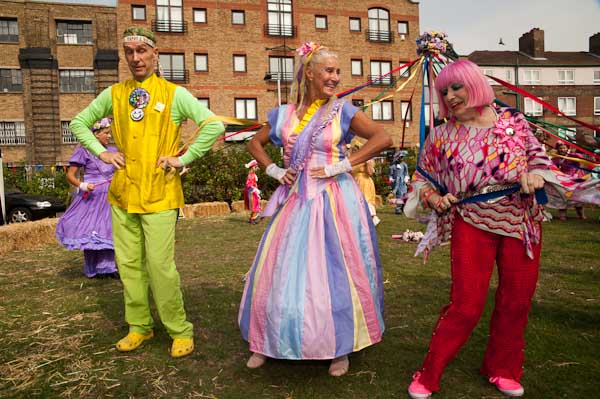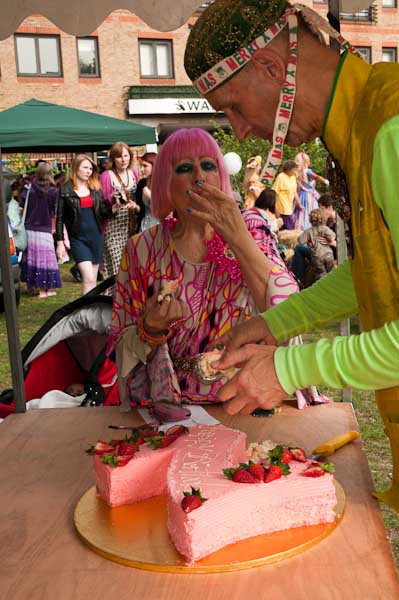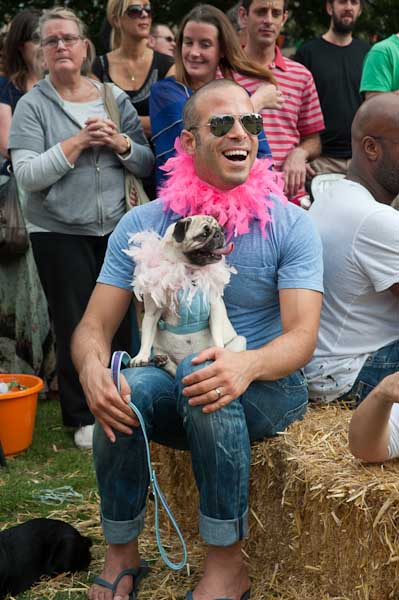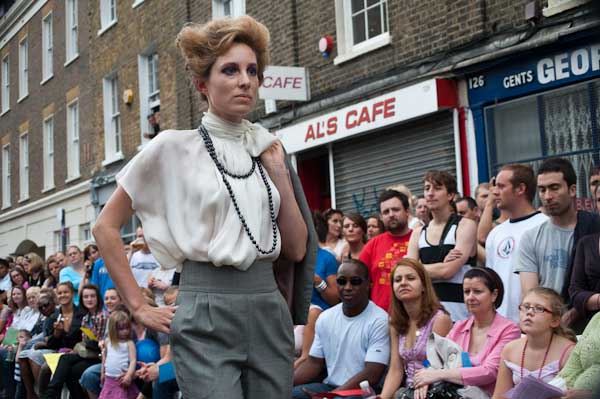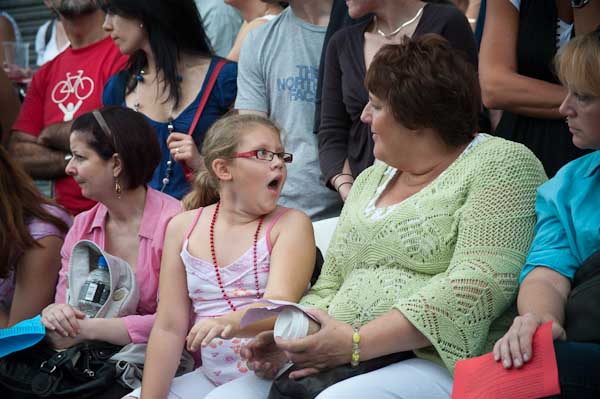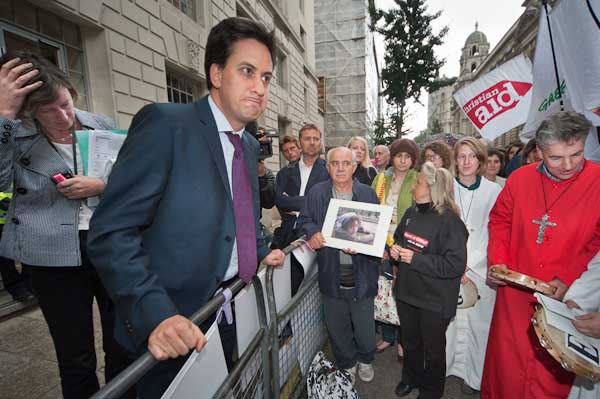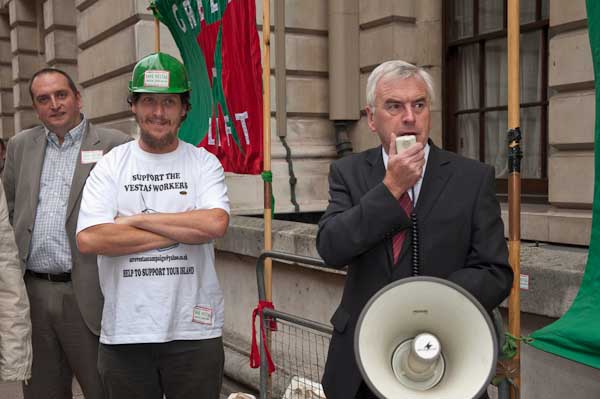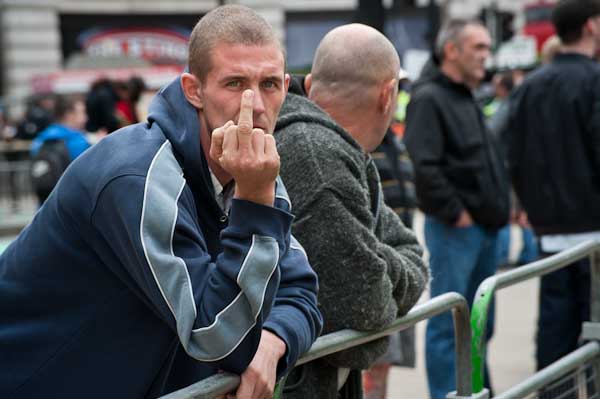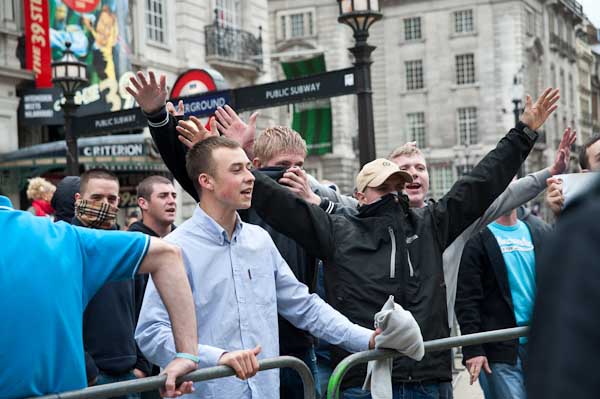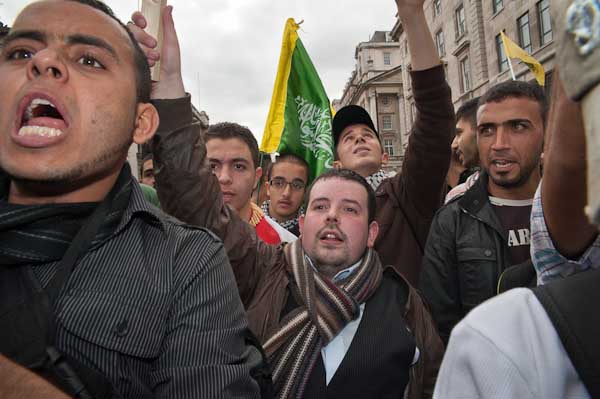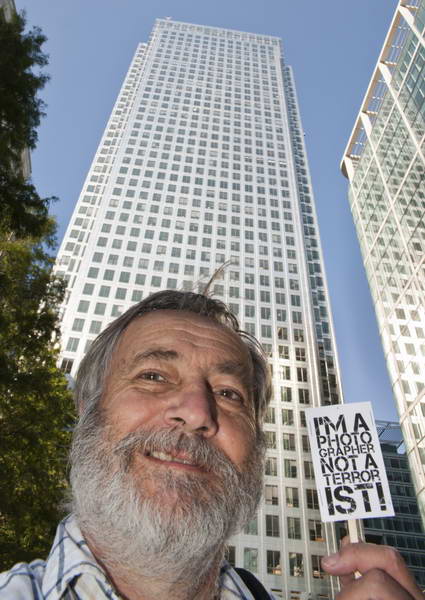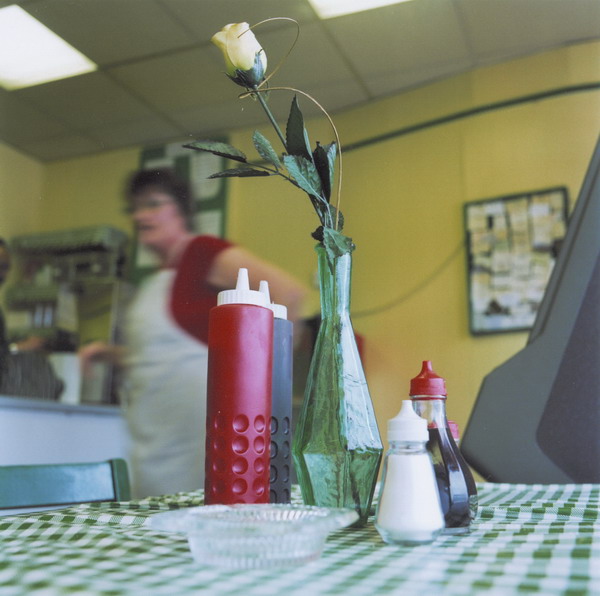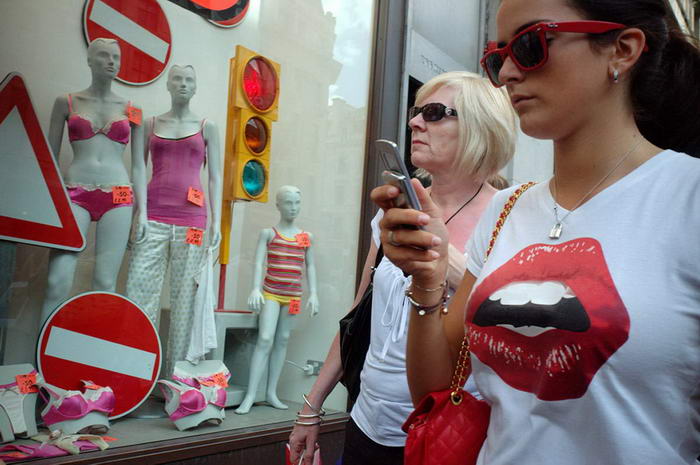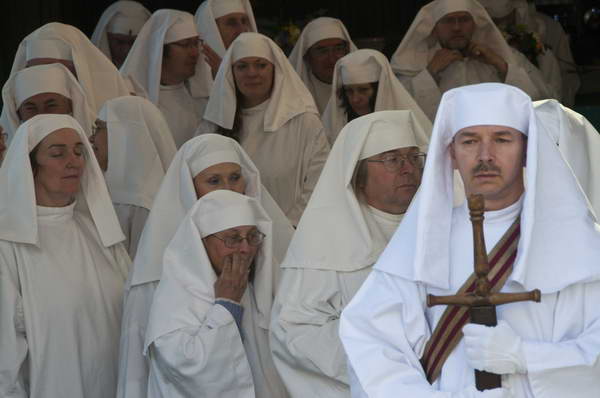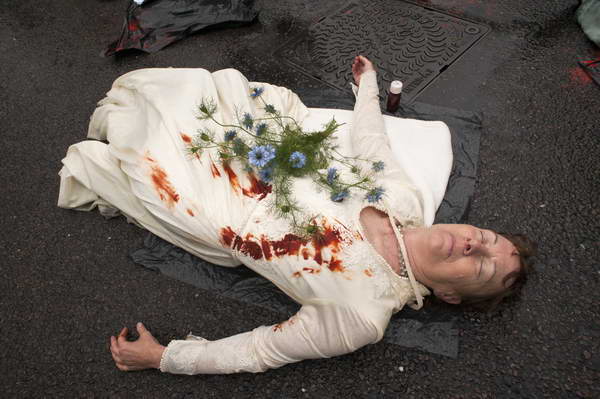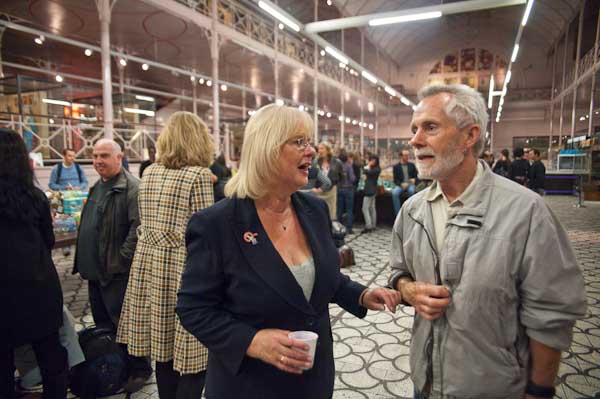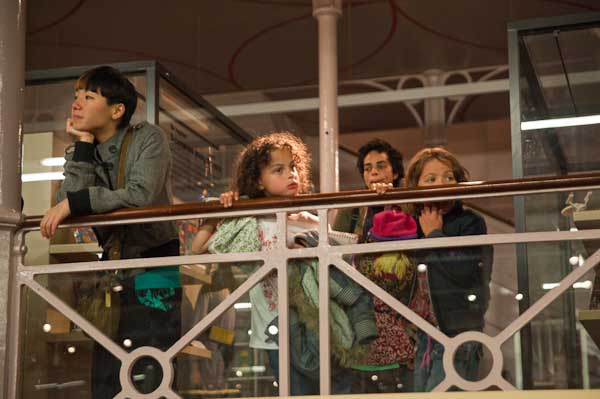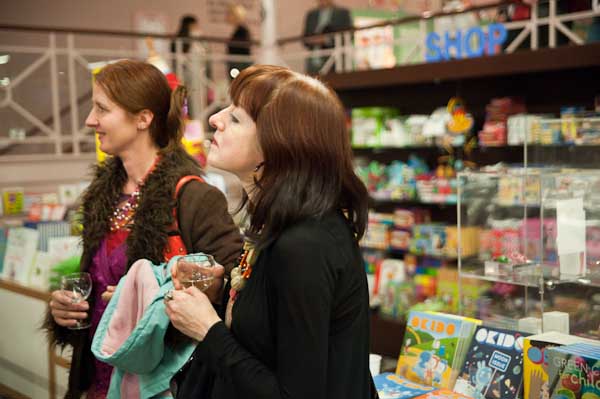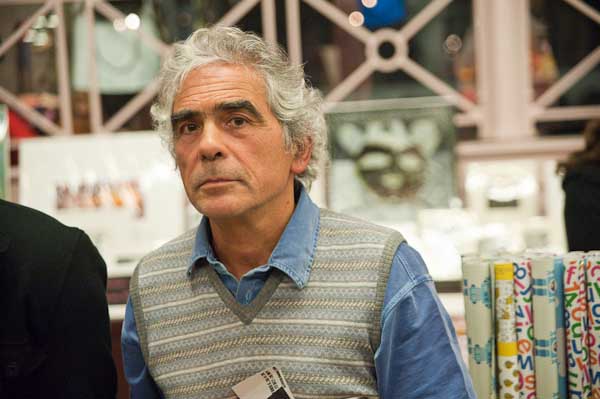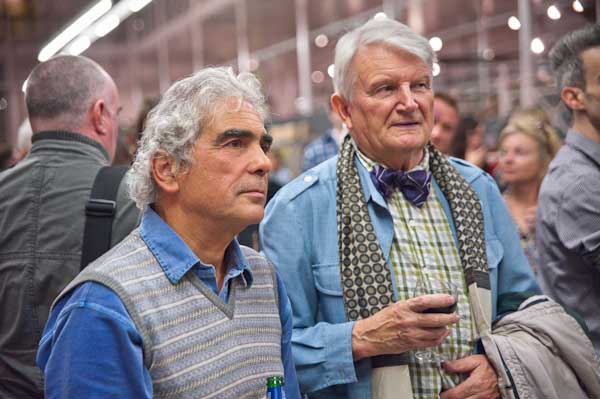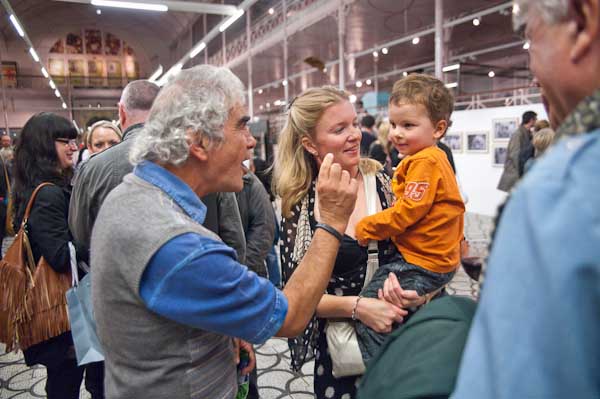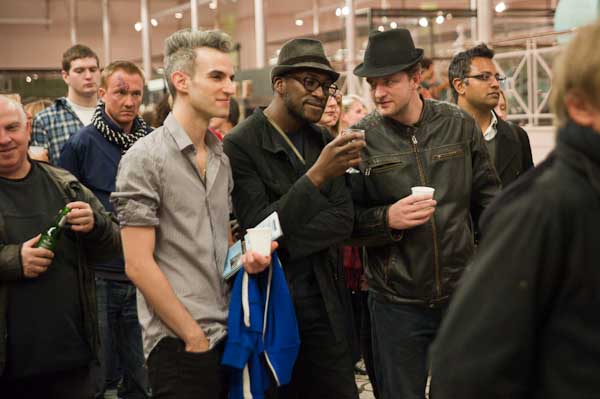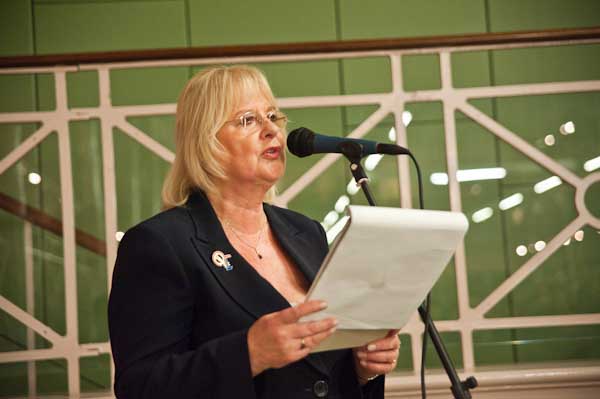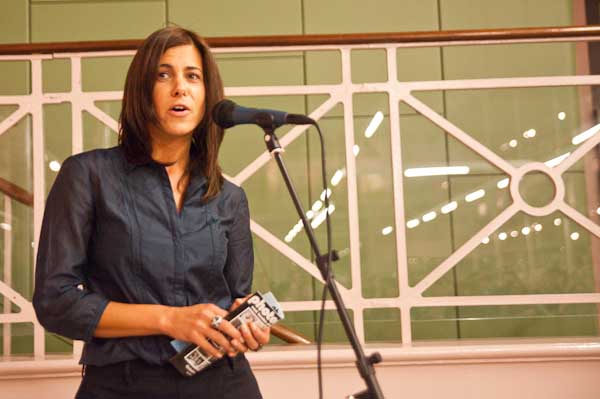Primrose Hill, just to the north of Regent’s Park and the zoo, has a wide view over the centre of London and is a pleasant place to sit on a warm sunny day. When I got there, a few people were marking out the grass next to the summit ready for the Autumn Equinox celebration by the Druid Order.
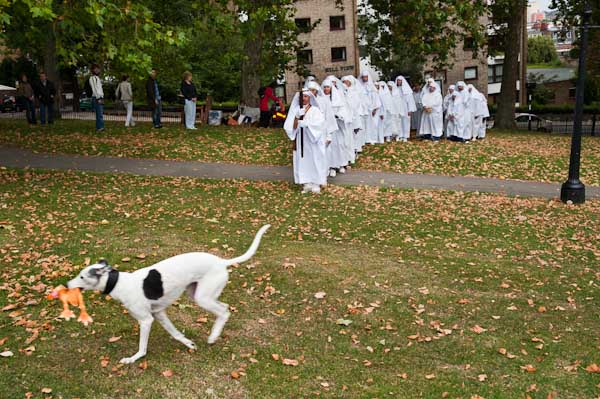
The dog and stolen rubber chicken are not a normal part of the celebration
I was interested to find a new memorial stone in the ground, perhaps 4 feet across, made of a grey cricle of slate set into a concrete base, with a brass circle in the centre carrying a bas-relief head and shoulders. Around it were twelve symbols, something like this: ‘/| \’, the three rays of the ‘druidic’ Awen, and in the next circle the name of ‘Iolo Morganwg’ who invented it, along with his date of birth and death, 1747-1826 and the text ‘THE TRUTH AGAINST THE WORLD’ together with what I assume is the same in Welsh. An outer ring carries the message (again in both English and Welsh) ‘This is the site of the first meeting of the Gorsedd of the Bards of the Isle of Britain 22.6.1792‘. Perhaps surprisingly this appears to be historically accurate.
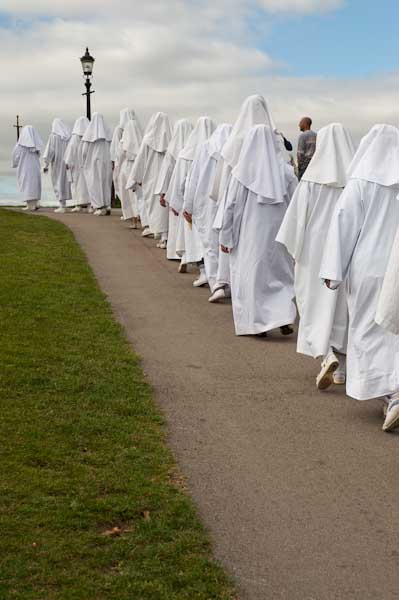
The Gorsedd still meets, but now at the National Eisteddfod of Wales, but it was good to see a memorial to “Glamorgan Eddie” who started it, even if we now know that much of the history he claimed to have translated from the ancient Welsh manuscripts that created a cultural image for the Welsh nation was his own complete invention.
Like many of our ‘ancient traditions’, The Druid Order who I had come to photograph also has a mythic history, tracing a lineage back to 1717 and even earlier, but actually began just around a hundred years ago. Perhaps fortunately so, because the ancient druids appear to have been a much more bloodthirsty lot. I don’t know when they began their celebrations at Primrose Hill (or Tower Hill in the Spring) but they first appear rather similarly dressed but under a different name at the Summer Solstice at Stonehenge in 1913.
The white robes and head dresses appear to have been derived initially from a fanciful description written in Germany around the middle of the last millennium rather than from the actual druids, who I suspect wore mainly animal skins and woad, but the robes are more photogenic. I think it would be hard not to take some interesting pictures of the celebration.
You can read more about the history of the druids (and if you want even more, a there is a lecture by historian and author Professor Ronald Hutton which you can download) in my feature on My London Diary, with of course many more pictures.
As usual, I found the fisheye rather useful.
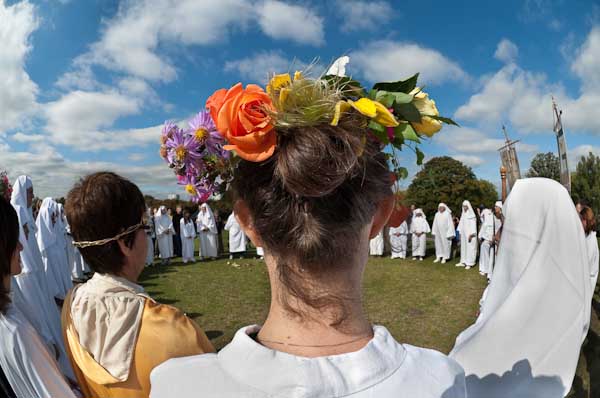
It was another occasion when two bodies would have been useful, although the 24-70 covered most of what I wanted. It would have been better to have had a second body that I could have had equipped either with something shorter or longer as the situation changes. Perhaps I might try keeping the24-70 permanently on the D700 but also carrying the D300 with 10.5mm fisheye, 10-20mm and 55-200mm. Only another 7-800 grams but I really need a bigger bag!
More here: Autumn Equinox: Druids at Primrose Hill
